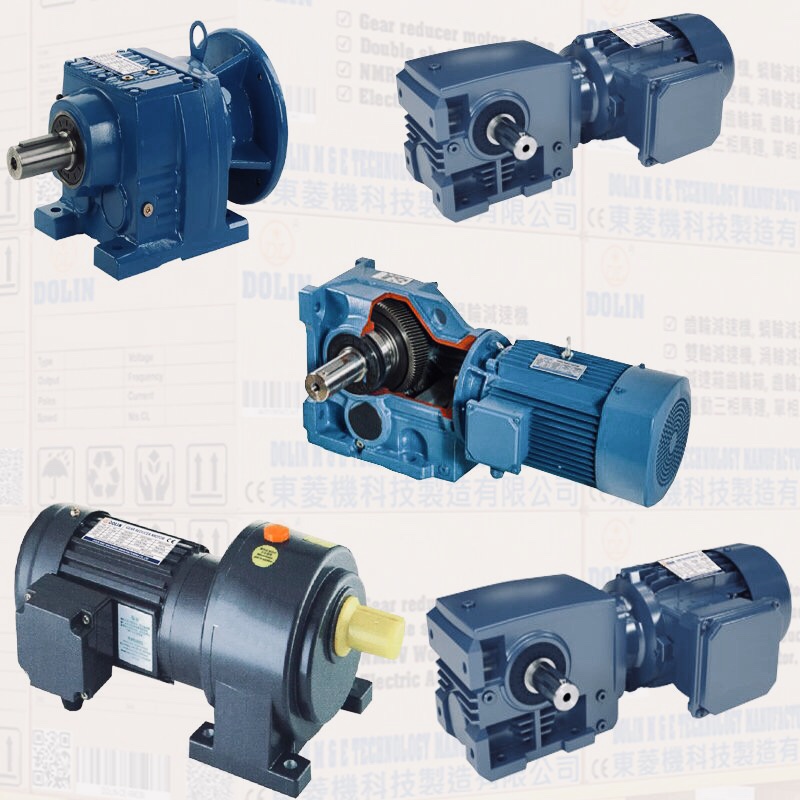- Home
- /
- News
- /
- Industry News
Understanding The Various Types Of Geared Motors And Their Applications

Gearmotors are electric motors that use a sort of gear system on the motor’s output. This gearing configuration is known as a gear reducer or gearbox.
Combining an electric motor and a gearbox saves design cost and complexity, especially for motors designed for high torque and low-speed purposes. Furthermore, gearboxes can be employed to reorient the output shaft in a different direction.
In this website, we’ll get a better understanding of the different types of geared motors and their advantages, along with the common applications of geared motors.
What Are the Various Types of Gear Motors?
Right-angle gear motors, which utilize worm, bevel, or hypoid gearing, and inline gear motors, which employ spur gears or planetary gear systems, are the two most prevalent forms of gear motors. Worm, spur, and planetary gear technologies are the most commonly utilized in Gearmotor designs.
Gear motors are offered with a choice of AC or DC motor types and reduction ratios to accommodate a broad range of applications such as automated door operators, food and beverage machines, and robotics.
Spur Gears
Spur gears, the most frequent form of gear used, are made with straight teeth cut or placed perpendicular to the shaft of the gear on a spherical (i.e., cylindrical) gear body. These gears use the parallel axes arrangement to transfer motion and force when joined in pairs. They can be coupled with a different spur gear, an internal gear (e.g. in planetary gear) or a gear rack (such as in a rack and pinion gear pair) depending on the application.
This sort of gear is utilized in a broad range of mechanical applications, including clocks, pumps, irrigation systems, power station machinery, material handling equipment, and clothes washing and drying machinery. Several spur gears can be utilized in a gear train to offer higher gear reduction if required for an application.
Advantages
Low cost
High gear ratios and torque output
Compact
Bevel Gears
Bevel gear sets feature crossing axes that are frequently but not always perpendicular. They mate by using teeth with angled edges. Straight or spiral teeth are both possible. Straight bevel gear teeth are utilized in low-speed applications, whereas spiral teeth are employed in high-speed and performance applications.
There are numerous varieties of bevel gears available, which are distinguished primarily by their tooth design. Straight, helical, and Zerol® bevel gears are some of the more popular varieties of bevel gears.
Advantages
Right-angle configuration
Highly durable
Worm Gears
Worm gear sets are made up of a worm wheel (usually a cylindrical gear) and a worm (a screw-shaped gear). These gears are being used to transfer motion and power across shafts that are not parallel and do not intersect. They have huge gear ratios and the ability to reduce speed significantly while remaining quiet and smooth.
One contrast between worm gear pairs would be that the worm can spin the worm wheel, however, the worm wheel might not be able to turn the worm based on the direction of the worm. This feature is used in equipment that requires self-locking mechanisms.
Advantages
High precision
Maintenance-free
Low noise
Right-angle configuration
The Most Common Applications of Geared Motors
Many industrial gear motors are generally fixed-speed AC-powered devices, while variable-speed fixed-gear-ratio motors offer more control. DC gear motors are most commonly used in vehicle industries such as truck power cranes, windscreen wiper motors, plus power seats or power window motors. On the other hand, gear motors are utilized in a variety of industrial applications, including jacks, cranes, elevators, clamping, automation, transportation, and mixing.
In this website, we’ll get a better understanding of the different types of geared motors and their advantages, along with the common applications of geared motors.
What Are the Various Types of Gear Motors?
Right-angle gear motors, which utilize worm, bevel, or hypoid gearing, and inline gear motors, which employ spur gears or planetary gear systems, are the two most prevalent forms of gear motors. Worm, spur, and planetary gear technologies are the most commonly utilized in Gearmotor designs.
Gear motors are offered with a choice of AC or DC motor types and reduction ratios to accommodate a broad range of applications such as automated door operators, food and beverage machines, and robotics.
Spur Gears
Spur gears, the most frequent form of gear used, are made with straight teeth cut or placed perpendicular to the shaft of the gear on a spherical (i.e., cylindrical) gear body. These gears use the parallel axes arrangement to transfer motion and force when joined in pairs. They can be coupled with a different spur gear, an internal gear (e.g. in planetary gear) or a gear rack (such as in a rack and pinion gear pair) depending on the application.
This sort of gear is utilized in a broad range of mechanical applications, including clocks, pumps, irrigation systems, power station machinery, material handling equipment, and clothes washing and drying machinery. Several spur gears can be utilized in a gear train to offer higher gear reduction if required for an application.
Advantages
Low cost
High gear ratios and torque output
Compact
Bevel Gears
Bevel gear sets feature crossing axes that are frequently but not always perpendicular. They mate by using teeth with angled edges. Straight or spiral teeth are both possible. Straight bevel gear teeth are utilized in low-speed applications, whereas spiral teeth are employed in high-speed and performance applications.
There are numerous varieties of bevel gears available, which are distinguished primarily by their tooth design. Straight, helical, and Zerol® bevel gears are some of the more popular varieties of bevel gears.
Advantages
Right-angle configuration
Highly durable
Worm Gears
Worm gear sets are made up of a worm wheel (usually a cylindrical gear) and a worm (a screw-shaped gear). These gears are being used to transfer motion and power across shafts that are not parallel and do not intersect. They have huge gear ratios and the ability to reduce speed significantly while remaining quiet and smooth.
One contrast between worm gear pairs would be that the worm can spin the worm wheel, however, the worm wheel might not be able to turn the worm based on the direction of the worm. This feature is used in equipment that requires self-locking mechanisms.
Advantages
High precision
Maintenance-free
Low noise
Right-angle configuration
The Most Common Applications of Geared Motors
Many industrial gear motors are generally fixed-speed AC-powered devices, while variable-speed fixed-gear-ratio motors offer more control. DC gear motors are most commonly used in vehicle industries such as truck power cranes, windscreen wiper motors, plus power seats or power window motors. On the other hand, gear motors are utilized in a variety of industrial applications, including jacks, cranes, elevators, clamping, automation, transportation, and mixing.
Newer articles
- Gearmotors Types and Industrial Applications (26/11/2020)
- All you need to know about gear motors and their components (27/11/2020)
- Right angle gear motors & parallel shaft gear motors (29/11/2020)
- 5 Things To Consider To Choose The Best Geared Motor Manufacturers (01/12/2020)
- Sensors on the front lines of changing industrial world (26/11/2020)
- When To Use An Inverter Duty Motor vs Standard Motor (25/11/2020)
- DC gearmotor or AC gearmotor: What Are the Gains? (21/11/2020)
- Avoid over-specifying inverter-duty motors (23/11/2020)
- What Is an Inverter Duty Motor? (23/11/2020)
- Rotary Motors for Precision Positioning – What to Choose When? (20/11/2020)
Older articles
- Top Benefits of Using Geared Motors (17/11/2020)
- 5 Layout Ideas For Gear Motor Applications (17/11/2020)
- The Differences Between Spur And Planetary Gear Motors (16/11/2020)
- Stepper Motors in Precision Motion Control and Positioning (14/11/2020)
- Gear Motors in Precision Motion Applications (13/11/2020)
- What is linear motion design engineering? (12/11/2020)
- How to select and specify stepper motors (11/11/2020)
- What is pole count and why does it matter? (10/11/2020)
- What are gearmotors and what do they do? (09/11/2020)
- How to Select a Gearmotor in Four Simple Steps (07/11/2020)





Join